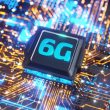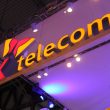In the run-up to MWC, AI-RAN Alliance Chair Alex Choi answered questions from a group of analysts. The Alliance is celebrating its approximately-first birthday at MWC25, having been officially launched the previous year.
Context
Choi was keen to highlight the progress made in this time, emphasising that the Alliance now has 75 members with another 50 lined up to join in the coming year, “Which I believe is the minimum viable scale,” he noted.
The key messages from this section were, in brief:
- AI RAN Alliance isn’t about creating standards but making AI capabilities work in practice. “By staying out of the rigid standardisation process, which is really time-consuming, we can move fast, experiment, and bring AI-driven solutions to the market as soon as possible.”
- Their three areas of attention are “AI for RAN,” making the radio network operate better; “AI and RAN”, which is putting RAN and AI workloads on a common shared infrastructure rather than having separate physical elements for each; and “AI on RAN”, essentially using the unique location and characteristics of the RAN to deliver better AI services.
- They’ll be showcasing ten demos in Barcelona, scattered across different member booths. However, chipset company ARM will apparently be showing all of them on a loop, so if there’s only one destination to visit, that’s it.
Of those demos, the majority are unsurprisingly different “AI for RAN” offerings. Given the history of the industry in building out machine learning, optimisation and prediction tools, this is where most companies will have things ready to be ported over under umbrella of the AI-RAN Alliance.
Revealingly, Choi commented that “We recognise that AI and RAN are the two very, very different technology domains. We don’t fully understand each other. So now we are making huge efforts trying to understand each other.”
This seems like a magnificent understatement, insofar as the pace of change, the outlook, the regulatory and competitive landscapes are alien to each other.
“Our mission is to bridge these two worlds, bringing the best of AI innovation into telecom and helping AI players understand the unique challenges and opportunities we offer,” Choi observed.
And, with that, to questions.
A Lack of Standards
If the AI-RAN Alliance wants to bring fundamental innovation into how the radio network functions, many people would expect this to be inescapably linked to standardisation and the long cycles associated with it. Not so Choi.
“The whole purpose of standardisation is to guarantee interoperability with standardised interfaces and reference architecture,” he observed. As former Chair of the O-RAN Alliance, it’s a position he should know well. How does the Alliance’s process relate to that?
“Mostly, it’s implementation issues,” Choi explained. “If the AI implementation and any algorithm is just an implementation issue, nothing to do with the internal interoperable interface issue, then vendors and anybody can just go ahead and do the implementation.”
Choi described most of the Alliance’s work as the ‘pre-standardisation’ research stage. “If we discover some of these items that need to be standardised, then we will bring it to the standards bodies,” he conceded.
“Then post-standardisation, we also will work on a reference implementation, we call it a blueprint, which will be posted and shared amongst the member companies.”
Can AI Really Deliver Cost Savings?
There are questions over whether AI in networks is ‘worth it’. Is the AI-RAN Alliance confident that AI won’t be more energy-hungry than the energy it saves on efficiencies?
“There is a perception that the GPU is power-hungry, it is true,” Choi began.
However, his contention is not so much that GPUs are inherently better than CPUs, but that in certain circumstances, they can work better. He offered the example of Massive MIMO, a use case which may well appeal to telcos aiming to increase capacity without building new base stations.
CPUs struggle to parallel-process, while “the beauty of the Massive MIMO algorithm is you can run it in very many parallel computations.” Choi gave the example of running the Massive MIMO algorithm on a CPU; perfectly possible but it takes 50 milliseconds. The same algorithm on a GPU would take five, then the GPU would go to sleep, taking the overall energy for the process below that of the CPU.
“So it only depends on how much parallel computation you need,” Choi concluded. “If your workload is dominated by parallel computation-heavy algorithm models, then a GPU will consume less energy than any other processor.”
How Much AI is AI-RAN Alliance AI?
The telecoms industry has spent years building machine learning algorithms and models in its networks, and especially in the radio network. Even for planned “AI-native” networks in the next generation, much of that is liable to be machine learning. So, should we be looking to the AI-RAN Alliance to introduce other forms of AI, such as GPTs, agentic AI or other elements for the “AI for RAN” elements?
“In AI for RAN, we can think of hundreds of different use cases, and most likely for more than half of them, traditional machine learning models will work,” Choi began.
“There are also many emerging use cases where the traditional machine learning model can work, but if you go with bigger models, neural networks, even reinforcement learning using large neural networks, it really gives the highest performance. And I think that if you consider the advanced features of 5G – Massive MIMO is a great example and the multicell, intercell coordination scheduling is another example – for those advanced use cases traditional machine learning cannot do the job, you definitely need a neural network.”
Some Unanswered Questions
While it was a thought-provoking hour, there were a few questions outstanding.
Firstly, the composition of the Alliance to date is certainly closer to the telecoms industry than AI. Choi was keen to highlight the operators, network vendors, telecoms AI specialists and chipset players like Nvidia and ARM who are involved. However, that wider ‘AI industry’ does not yet seem to be on the scene. We might hope to find a Microsoft, Google, Open AI, IBM or Meta on the membership list at some point.
This leans into Choi’s comment on the very different domains. While there is certainly room in the industry for much more innovation and for supporting players in, for example, AI, the processes to enable this are still unformed. There is certainly a technology play and many important questions to be addressed, but without bringing together the commercial and operational challenges involved the impact will be limited.
For example, we know that AI is changing rapidly, and with that so is the computing and chipset space. To what degree can we create upgrade cycles for network hardware that allow telcos to keep pace? Should we be thinking about easily replaceable modules within base stations to support upgrades, and if not, can we future-proof new purchases by overprovisioning the computing power, storage and energy supply to meet forecast demand in a cost-effective way?
While the AI-RAN Alliance has come a long way in just a year, there is a long way still to go.



